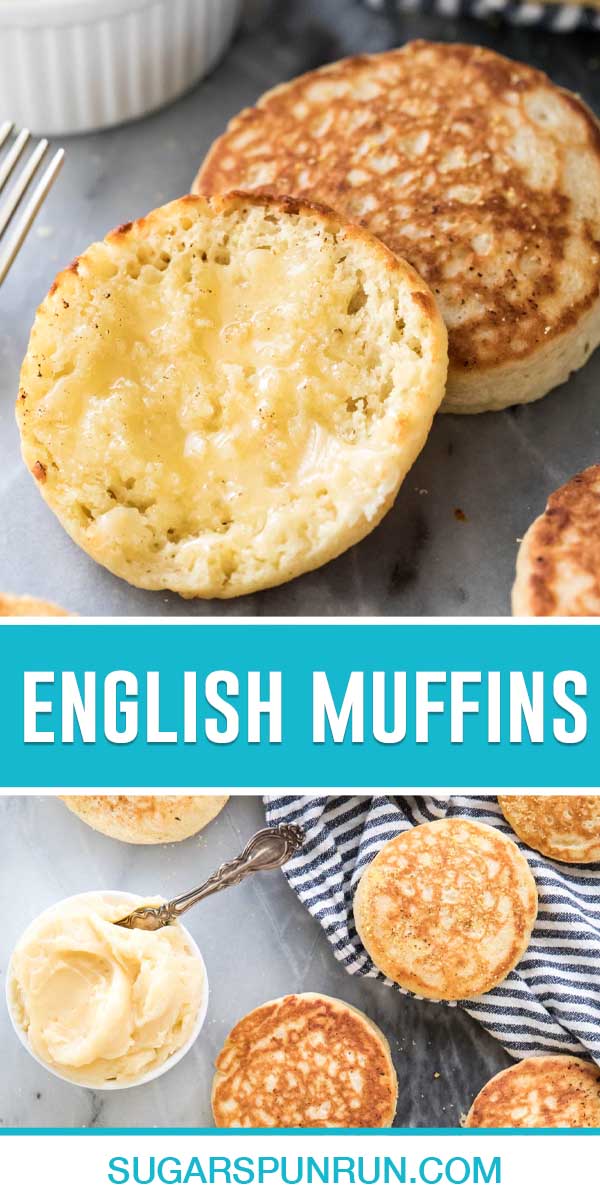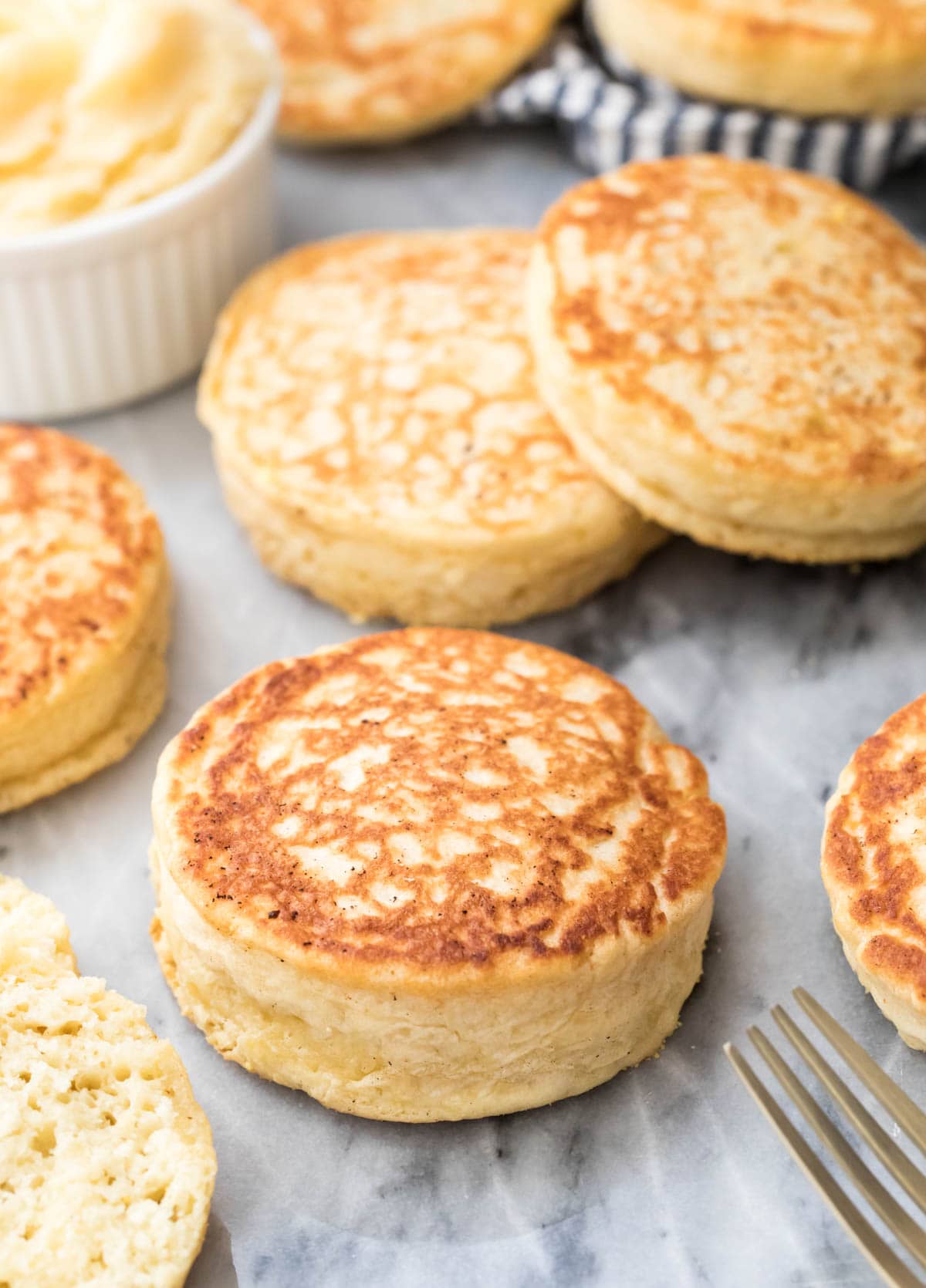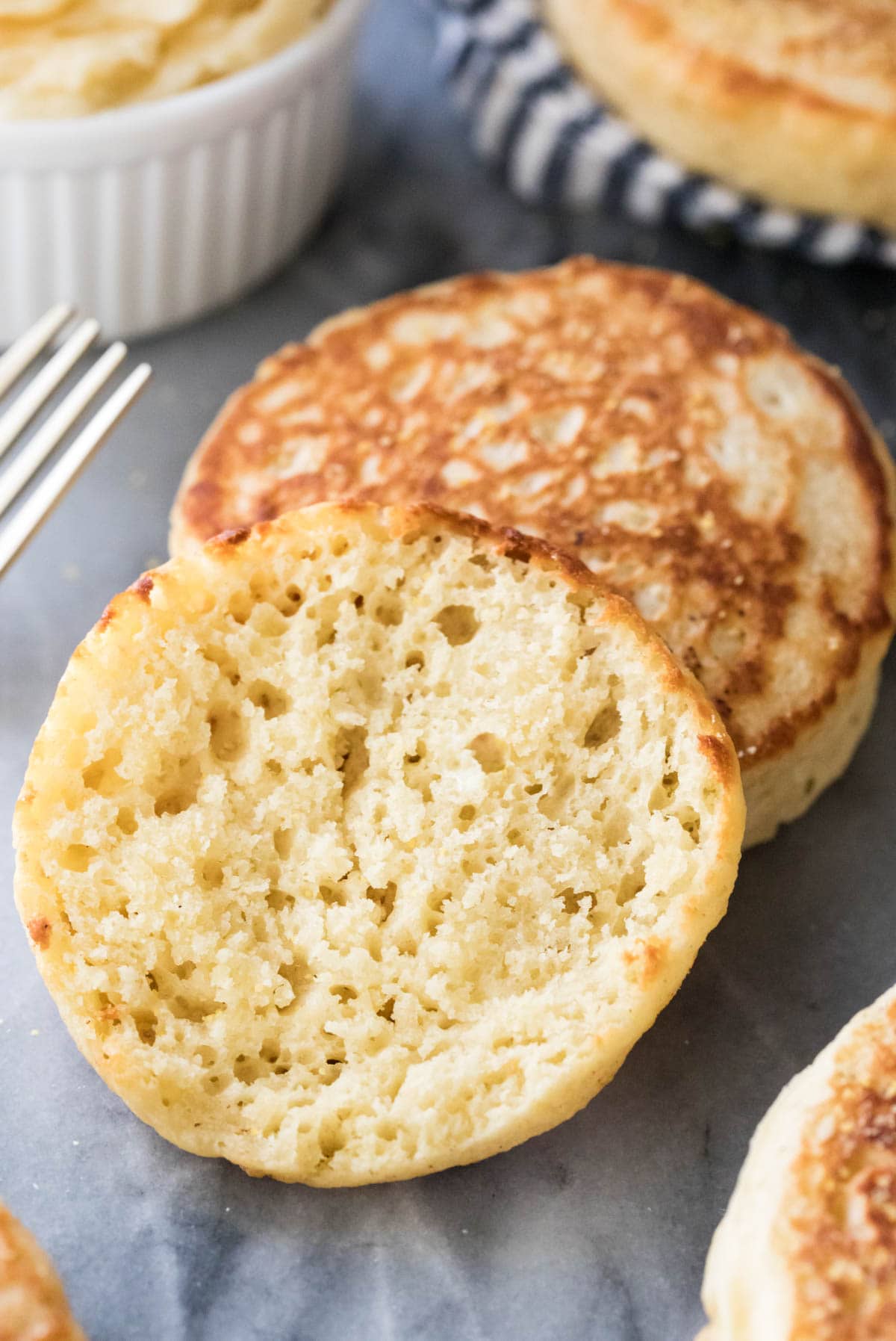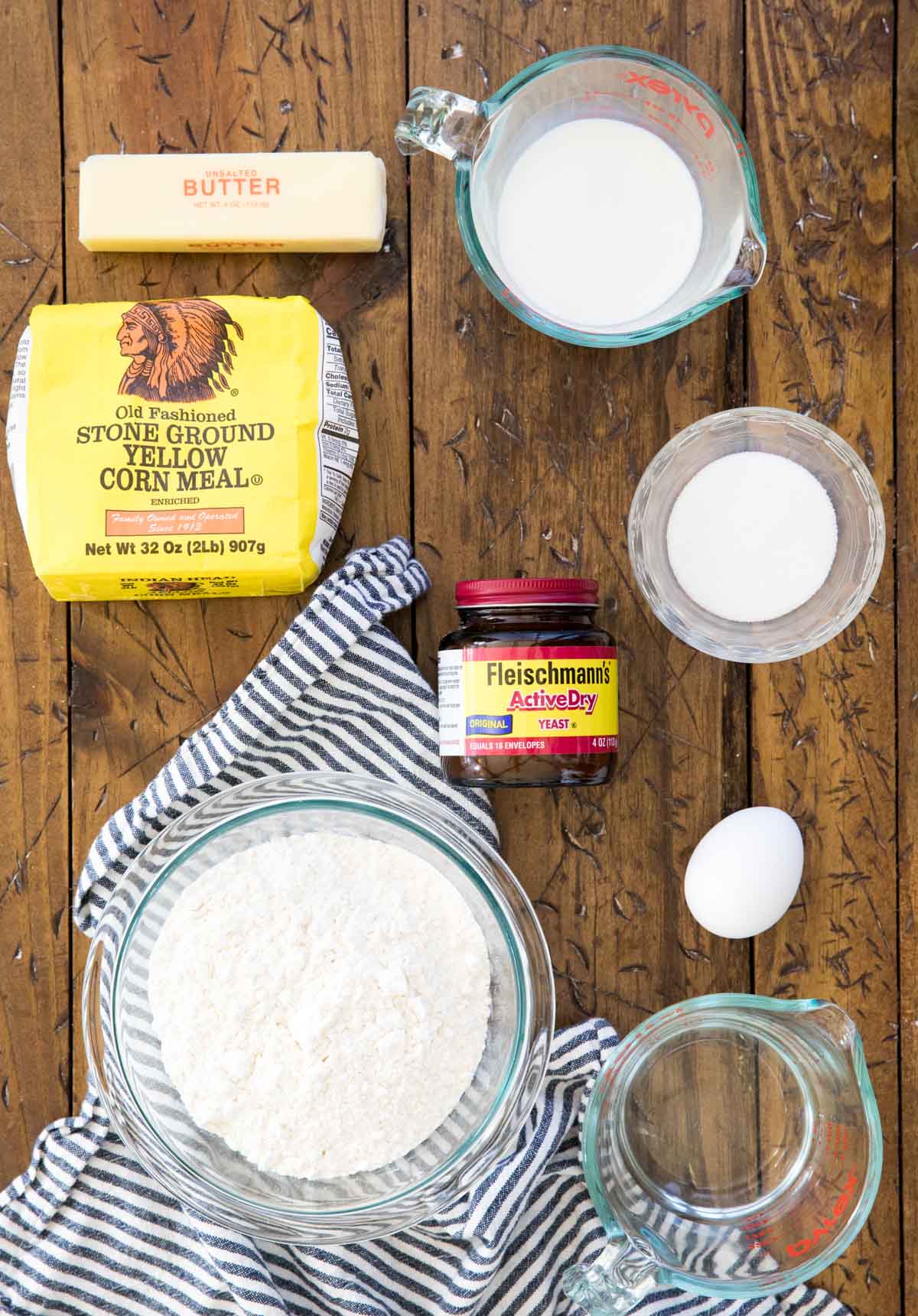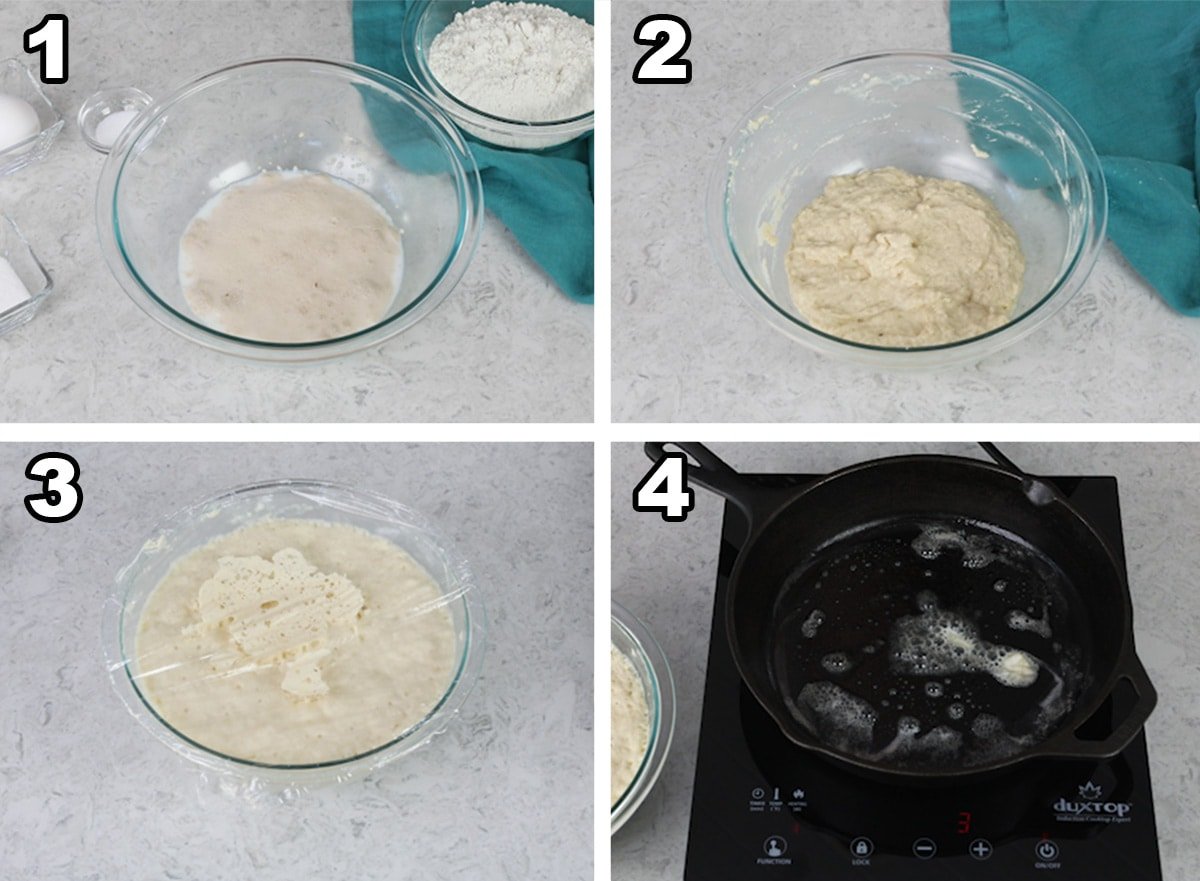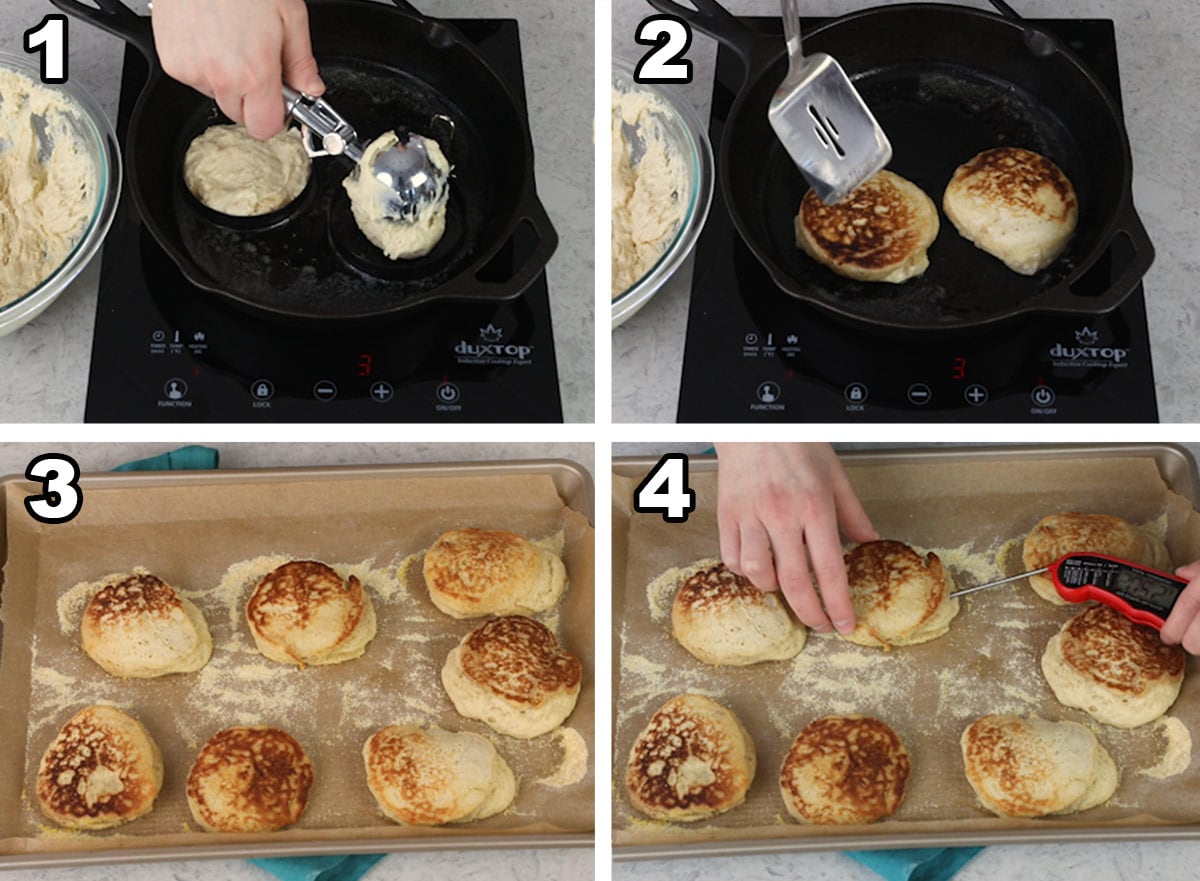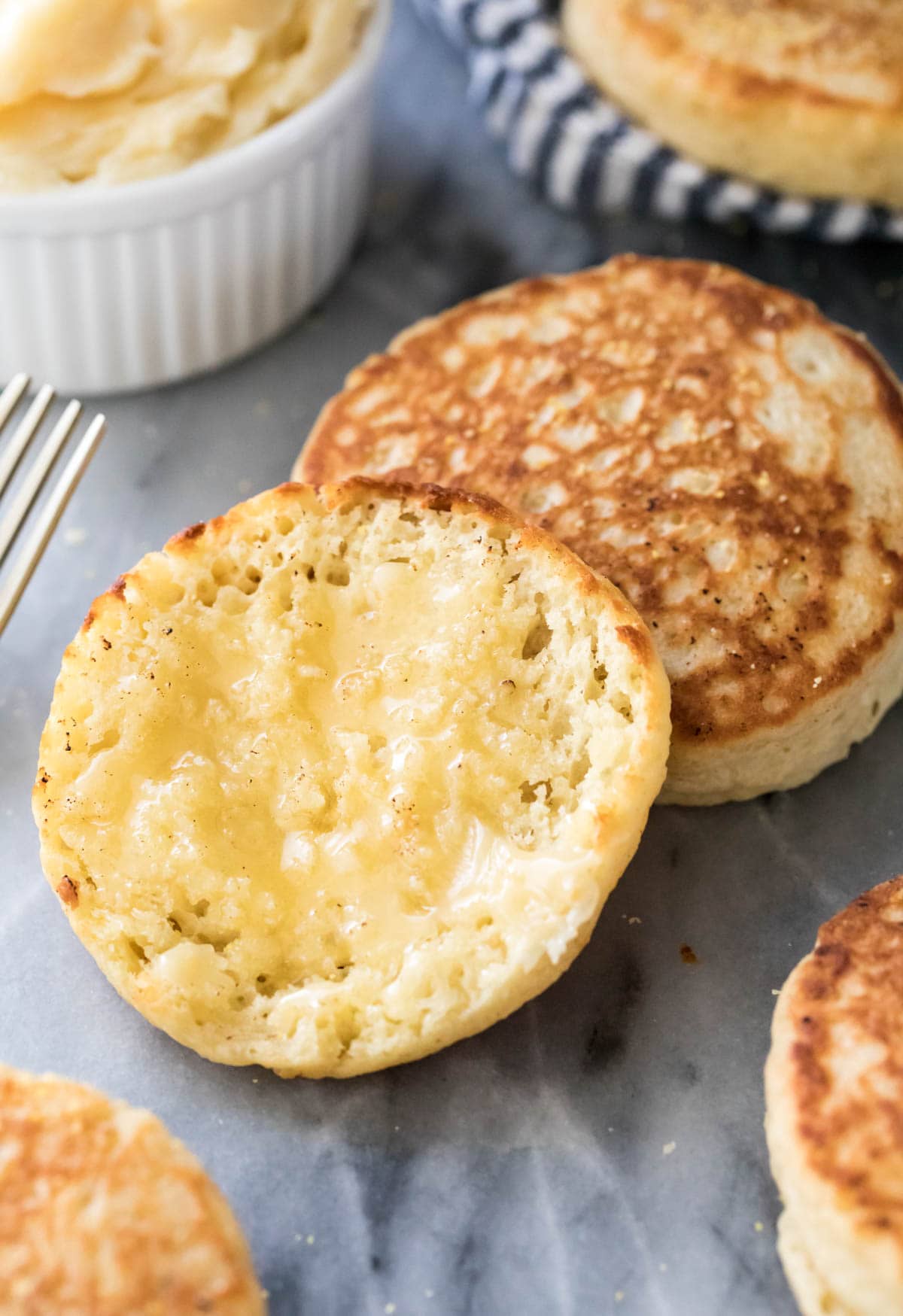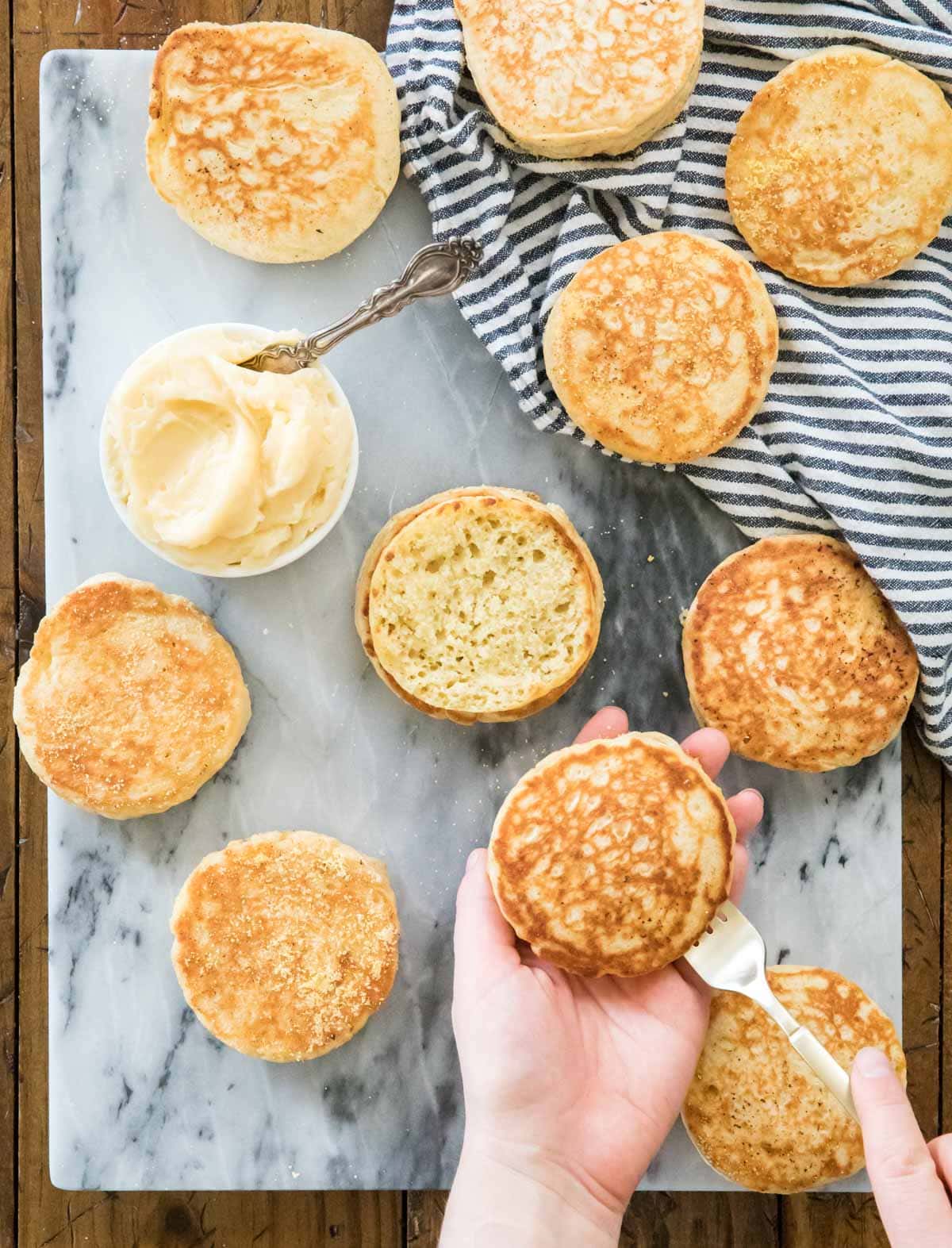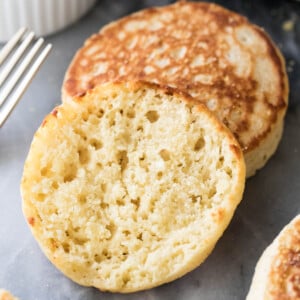Nooks & Crannies Galore
Many English muffin recipes are nothing more than basic bread recipes shaped into discs and cooked on a griddle. This method “works”, but the end result falls flat with no nooks, no crannies, and a very bread-y flavor that just doesn’t ring true to the classic English muffin. My recipe is different. While my homemade bread was a good starting point, there were a few drastic and key changes that needed to be made in order to make true English muffins. It took quite a bit of troubleshooting, but to say I’m happy with the way these ultimately turned out is an understatement, I’m downright thrilled and I can’t wait for you to try them. They’re so easy (no mixer, no kneading!), so quick (5 minutes to stir together and just 30 minutes of resting, no overnight proofing!) and they taste like the real thing. They are the real deal, and you’ll never go back to store-bought, ever. So what is it that makes my recipe so darn good?
English Muffin Dough, Perfected
The difference is all in the dough. While most yeast doughs (like sweet bread or pizza dough) are made with a dense, elastic dough that you can knead and shape, English muffins require a very different sort of dough. In fact, it’s more of a batter, and it’s incredibly simple to make with absolutely no kneading required (and only a brief 30 minute rise/rest)! This is a very (almost shockingly) thin dough, at least where yeast doughs are concerned. The flour has been drastically reduced, but this is for two very important reasons. First, reducing the flour creates a loose and sticky batter (as opposed to a firm, dense one). This matters, because as the dough cooks on your stovetop, tiny air pockets form and tunnel through the dough (which couldn’t happen if you had a more classic, dense dough). These become your nooks and crannies. Because of its structure, my English muffin dough can’t be kneaded, rolled, or shaped, it must be scooped! It’s similar to an elastic pancake or muffin batter, and once you uncover it after its risen you might even panic a bit and think something’s wrong… Don’t panic! Forge onward. Do it for the nooks and crannies. Second, reducing the flour helps to gives the English muffins their characteristic, subtle savory/sour/tangy flavor. A good recipe must have this flavor (which traditional bread does not). When I reduced the flour trying to achieve nooks and crannies, I was thrilled to find the flavors fostered by the yeast shone a bit more and gave me the distinct, signature taste I was looking for. Perfection (and much less fussy and time consuming than some of the other methods I’d tried, including using buttermilk and letting the dough rise for 18 hours)! So what do you need for the BEST English muffins?
Ingredients
This is just an overview of the ingredients I used and why. For the full recipe please scroll down to the bottom of the post!
How to Make English Muffin Batter
How to Cook English Muffins
SAM’S Tip: Never use a knife to split your English muffins! Always use the tines of a fork, piercing all around the sides of the muffin in a line until split in two. Cutting with a knife can actually ruin/hide the nooks and crannies!
More Recipes You Might Like
Chocolate rollsBeignetsSticky bunsHomemade bagels
Enjoy! These nook and cranny-filled muffins are not just for breakfast! Trying covering them with a simple strawberry sauce for a snack or dessert, or make mini-pizzas by topping them with homemade pizza sauce and cheese! Let’s bake together! Make sure to check out the how-to VIDEO in the recipe card!
